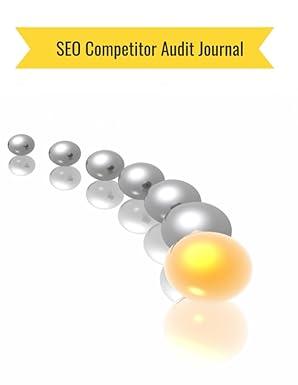Question
1-a- Following is the balance sheet of Campbell Company for Year 3: CAMPBELL COMPANY Balance sheet Assets Cash $ 14,500 Marketable securities 7,700 Accounts receivable
1-a- Following is the balance sheet of Campbell Company for Year 3:
| CAMPBELL COMPANY Balance sheet | |||
| Assets | |||
| Cash | $ | 14,500 | |
| Marketable securities | 7,700 | ||
| Accounts receivable | 12,620 | ||
| Inventory | 11,000 | ||
| Property and equipment | 167,500 | ||
| Accumulated depreciation | (12,800 | ) | |
| Total assets | $ | 200,520 | |
| Liabilities and Stockholders Equity | |||
| Accounts payable | $ | 8,600 | |
| Current notes payable | 3,840 | ||
| Mortgage payable | 4,950 | ||
| Bonds payable | 21,240 | ||
| Common stock | 113,200 | ||
| Retained earnings | 48,690 | ||
| Total liabilities and stockholders equity | $ | 200,520 | |
The average number of common stock shares outstanding during Year 3 was 870 shares. Net income for the year was $14,600. Required Compute each of the following: (Round your answer to 2 decimal places. For percentages, 0.2345 should be entered as 23.45.)
1-b- The following financial statements apply to Karl Company:
| Year 2 | Year 1 | |||||||
| Revenues | 436,000 | 360,000 | ||||||
| Expenses | ||||||||
| Cost of goods sold | 252,000 | 206,000 | ||||||
| Selling expenses | 42,000 | 38,000 | ||||||
| General and administrative expenses | 22,000 | 20,000 | ||||||
| Interest expense | 6,000 | 6,000 | ||||||
| Income tax expense | 42,000 | 36,000 | ||||||
| Total expenses | 364,000 | 306,000 | ||||||
| Net income | $ | 72,000 | $ | 54,000 | ||||
| Assets | ||||||||
| Current assets | ||||||||
| Cash | $ | 74,000 | $ | 84,000 | ||||
| Marketable securities | 2,000 | 2,000 | ||||||
| Accounts receivable | 70,000 | 64,000 | ||||||
| Inventories | 200,000 | 192,000 | ||||||
| Prepaid expenses | 6,000 | 4,000 | ||||||
| Total current assets | 352,000 | 346,000 | ||||||
| Plant and equipment (net) | 210,000 | 210,000 | ||||||
| Intangibles | 40,000 | 0 | ||||||
| Total assets | $ | 602,000 | $ | 556,000 | ||||
| Liabilities and Stockholders Equity | ||||||||
| Liabilities | ||||||||
| Current liabilities | ||||||||
| Accounts payable | $ | 80,000 | $ | 108,000 | ||||
| Other | 34,000 | 30,000 | ||||||
| Total current liabilities | 114,000 | 138,000 | ||||||
| Bonds payable | 132,000 | 134,000 | ||||||
| Total liabilities | 246,000 | 272,000 | ||||||
| Stockholders equity | ||||||||
| Common stock (100,000 shares) | 230,000 | 230,000 | ||||||
| Retained earnings | 126,000 | 54,000 | ||||||
| Total stockholders equity | 356,000 | 284,000 | ||||||
| Total liabilities and stockholders equity | $ | 602,000 | $ | 556,000 | ||||
Required Calculate the following ratios for Year 1 and Year 2. Since opening balance numbers are not presented do not use averages when calculating the ratios for Year 1. Instead, use the number presented on the Year 1 balance sheet.
- Net margin. (Round your answers to 2 decimal places.)
- Return on investment. (Round your answers to 2 decimal places.)
- Return on equity. (Round your answers to 2 decimal places.)
- Earnings per share. (Round your answers to 2 decimal places.)
- Price-earnings ratio (market prices at the end of Year 1 and Year 2 were $11.88 and $9.54, respectively). (Round your intermediate calculations and final answers to 2 decimal places.)
- Book value per share of common stock. (Round your answers to 2 decimal places.)
- Times interest earned. (Round your answers to 2 decimal places.)
- Working capital.
- Current ratio. (Round your answers to 2 decimal places.)
- Quick (acid-test) ratio. (Round your answers to 2 decimal places.)
- Accounts receivable turnover. (Round your answers to 2 decimal places.)
- Inventory turnover. (Round your answers to 2 decimal places.)
- Debt-to-equity ratio. (Round your answers to 2 decimal places.)
- Debt-to-assets ratio. (Round your answers to the nearest whole percent.)
Step by Step Solution
There are 3 Steps involved in it
Step: 1

Get Instant Access to Expert-Tailored Solutions
See step-by-step solutions with expert insights and AI powered tools for academic success
Step: 2

Step: 3

Ace Your Homework with AI
Get the answers you need in no time with our AI-driven, step-by-step assistance
Get Started


